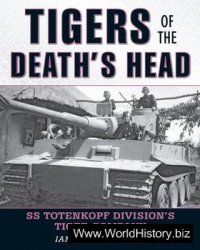Following the successful establishment of agriculture throughout Europe, farming communities from the Balkans to Ireland and from Sweden to Spain developed into mature and stable societies. They had accumulated a store of knowledge about cultivation and livestock that enabled them to handle the risk and uncertainty inherent in an agricultural economy. Herds ceased to be simply a source of meat and hide and became living resources for milk, wool, and animal power. Metals, particularly copper, came to be used in many areas, first for ornaments and then for tools. Mortuary ceremonialism became more elaborate and widespread.
Archaeologists refer to the final millennia of the Neolithic with a variety of terms. Late Neolithic is the most common label, while in southeastern Europe the use of copper has led many scholars to refer to this time as the Copper Age. Older publications use the term Eneolithic, although this label is rarely applied today. Chronologically, the Late Neolithic can be said to be framed roughly by the span of time between 5000 and 2800 BC in southern and southeastern Europe, 4000-2200 BC in central and eastern Europe, and 3500-2000 BC in northern and western Europe.
Copper Metallurgy
The use of copper to make ornaments and tools appeared first in the Balkans just before 5000 BC, when the ability of potters to achieve high temperatures for the firing of pottery also enabled them to smelt copper from its ores. During the millennium that followed, the knowledge and skill of the early metalworkers developed further, and copper use expanded throughout southern Europe and into central Europe. The earliest copper artifacts were beads, pendants, and bracelets, although subsequently, it became possible to make complex forms like axes and chisels using molds.
Copper was smelted from ores such as malachite and azurite which are found in mountainous areas. Many Late Neolithic copper mines have been found in central and southeastern Europe, including Rudna Glava in Serbia and Aibunar in Bulgaria. The presence of copper slag at settlement sites suggests that metalworking was a part of routine life for Late Neolithic peoples in southeastern Europe. Copper artifacts are found in both mortuary and domestic contexts. (3tzi the Iceman was carrying a copper ax when he died around 3300 BC.
Artifacts made from copper, particularly daggers, are especially prominent features of the Late Neolithic societies of northern and western Europe. In these areas, copper artifacts clearly are prestige items, found almost exclusively in burials, presaging the role of bronze, an alloy of copper and tin, in the years after 2000 BC.
The Late Neolithic Built Environment
Settlements, burials, and ceremonial sites became visible and permanent features of the landscape and were invested with attachment and with meaning. In different parts of Europe, these locations took various forms: nucleated settlements; groups of dispersed farmsteads, compact, densely settled mounds; strongholds with earthworks; cemeteries of all sorts; tombs: megaliths, long barrows; rondels and causewayed camps, even bogs and ponds as locations for rituals. The significance of these locations lasted on a time scale ranging from decades to centuries. The locations of habitation, burial, and ritual were the spatial anchors of Late Neolithic society to a far greater degree than had been seen previously. Moreover, these sites were connected by well-worn communication routes: paths, tracks, rivers, passes, and portages. They were destinations as well as starting points. This inter-site movement is dramatized by the find of the (3tzi the Iceman, about whom more will be said below, who died while negotiating a high Alpine pass around 3300BC.
Circular ditched enclosures known as ‘rondels’ are found in upland loess zones south of the Carpathians in Bohemia, Moravia, Slovakia, Austria, and eastern Germany. Unexcavated gaps in the ditch at four opposing points on the perimeter provide a way across. Usually, there are few traces of settlement, so these appear to have served some form of nonhabitation purpose, presumably ceremonial. At Goseck in eastern Germany, a series of four concentric ditches and two palisades about 75 m at their maximum diameter have been recently discovered. The palisades had three gates facing southeast, southwest, and north. The excavators have suggested an astronomical purpose for the site, while alternatively the gates in the palisades controlled access to the central ceremonial space.
Similar to the rondels of central Europe are the so-called ‘causewayed camps’ of the British Isles that date between 3700 and 3000 BC. About 40 such enclosures are known, largely on the chalk downs and river terraces of southern England. Often, they are associated with earthen long barrows, about which more will be said below. These sites have one or more concentric ditches, roughly circular in plan, interrupted at several points by unexcavated portions, which form ‘causeways’ into the interior. The existence of the causeways and the locations of the sites suggest that the earthworks did not fulfill a defensive function. Instead, they are most commonly interpreted as ceremonial or ritual sites. At a number of them, such as Hambledon Hill in Dorset, human remains have been found in the ditches and interiors. At Hambledon Hill, these remains had been exposed to the elements and largely defleshed prior to their deposition in the ditch.
Another such important place was Sarup in Denmark. Between 3400 and 3200 BC, an enclosure with several causeways was built to enclose an area of about 8.5 ha on a sandy promontory. The enclosure was not a complete encirclement of the site, since it was bounded on two sides by water. Instead, it closed off the landward side of the promontory from the surrounding terrain. The Sarup enclosure grew from a simple palisade to a complex system of parallel ditches and palisades, placed conspicuously in a landscape that contained dozens of megalithic tombs. It appears that the Sarup enclosure was also a place of ritual, for a number of the pits and ditches contained burnt human bones.
In northern and western Europe, Neolithic people and their livestock often needed to cross wetlands. They began to lay down wooden trackways made from stakes and logs across the wet areas. One of the best known is Sweet Track in Somerset, England, where the earliest trackway has been dated by tree-rings to the winter or early spring of 3807 or 3806 BC. Later, wider roads made from logs were laid down, many of which were often rebuilt and used for centuries.
Neolithic roads may also have existed on dry terrain. These are very difficult to document, but some have proposed that the arrangement of burial monuments across the landscape reflects ancient road systems. It seems logical that Neolithic tracks and even roads would have run through mountain passes and converged on major stream crossings. The widespread distribution of raw materials and finished artifacts clearly reflects a population on the move.
Intimacy with the Dead
One of the defining characteristics of the Late Neolithic and Copper Age is what could be called ‘mortuary ceremonialism’. Such ceremonialism takes a variety of forms, from the megalithic tombs of the Atlantic fringe to the elaborate cemeteries of southeastern Europe. A distinctive feature of these societies was a particular intimacy with the dead, who were a persistent presence in society and continued to be encountered on a regular basis in excarnation places, collective tombs, settlement burials, and family plots and cenotaphs in cemeteries. These encounters occurred in a context of ceremonial veneration for ancestors and a sense of continuity of place and affiliation. It legitimized the existence and perpetuation of the household or hamlet to whom the dead belonged.
A cemetery at Varna, in northeastern Bulgaria, provides the richest collection of Late Neolithic/ Copper Age burials in eastern Europe. Although its dating is inexact, correlation with dates finds from other sites suggests that the Varna cemetery was in use between 4900 and 4400 BC. The nearly 300 graves contain gold, copper, and other luxury items, although 20% were ‘symbolic graves’ or cenotaphs without actual human remains. Gold artifacts, the most distinctive aspect of the Varna cemetery, occur in 61 graves, including most of the cenotaphs. Curiously, most of the gold is found in the cenotaphs, while only a few of the graves with skeletons were similarly furnished. Three cenotaphs contained gold-ornamented clay masks with male features. The richest burial at Varna contained the skeleton of a man about 40-50 years old and about 1.75 m tall. Accompanying the skeleton were nearly a thousand gold objects along with other items made of copper, stone, clay, and Spondylus shell. One of the gold objects is termed a ‘scepter’, in which a wooden handle had been sheathed with gold and topped with a stone macehead.
OOtzi the Iceman
Not all Late Neolithic human remains are found in graves. In 1991, two hikers in the Alps came across the frozen corpse of a man who subsequent investigation showed to have died about 3300 BC. Nicknamed OOtzi and ‘the Iceman’ by the press, this find produced one of the most remarkable glimpses of the life of a Late Neolithic inhabitant of central Europe. He was in his middle - to late-40s, rather old for his time, and had lived a hard life.
OOtzi was carrying a lot of equipment, including a bow and a quiver of arrows, bone points, a needle, a copper axe in a handle, several flint tools, a marble pendant, and several pieces of fungus believed to have medicinal properties. He was wearing a bearskin hat, shoes with bearskin soles and deerskin uppers, goatskin leggings and loincloth, a calfskin pouch and belt, and a cape of woven grass. His stomach contents indicated that he had recently consumed venison and cereals before his death in late spring or early summer, as indicated by tree pollen.
The circumstances of OOtzi’s death remain a matter of controversy. A CT scan has revealed an arrowhead embedded in his shoulder, and wounds have been found on his hand and wrist. Was he fleeing from attackers with whom he had previously fought, or was he an individual who had lived a physically taxing and sometimes violent life who had the misfortune to be caught in a late-spring blizzard as sometimes occurs high in the Alps? The answer is simply not yet known. Today, OOtzi’s corpse and the associated finds can be seen at the Archaeological Museum in Bolzano, Italy.
The Secondary Products Revolution
In a 1981 essay, Andrew Sherratt (1946-2006) coined the term ‘Secondary Products Revolution’ to describe a major shift in the use of domestic animals from providers of meat and hides, which required the death of the animal to ‘Secondary products’, renewable resources taken from living animals such as milk, wool, and animal power, or traction. During the fourth millennium BC, Neolithic farmers in east-central Europe began to make much greater use of these secondary products. A variety of social changes are reflected this change in animal management. Although some activities, such as dairying, began in earlier prehistoric periods, approaches to animal use became progressively more complex during the Late Neolithic. The key data for the Secondary Products Revolution include ceramic sieves and vessels probably used in milk handling; animal figurines; remains of wagons, wagon parts, and plows in burials and waterlogged deposits; wagon models and representations on pottery; rock-carvings of wagons; ritual burials of cattle and other livestock; and plow-marks on fossil soils under barrows.
Two of the principal secondary products, milk and wool, may have been in use much earlier, but after 4000 BC their use was especially widespread. Dairy production would have enabled Neolithic farmers to collect milk from their animals and to convert it into storable food such as cheese and yogurt. The availability of such storable animal products would have enabled Neolithic households to maintain a steady food supply during the growing season and to obtain dietary protein and fat during the summer before the crops were harvested. Wool from sheep would have provided warm clothing that permitted more winter activities as well as blankets and wall hangings that would have kept Neolithic houses warm and reduced the amount of wood burned for fuel.
Animal power was perhaps the most significant aspect of the Secondary Products Revolution. Traction from oxen would have been useful for two major Late Neolithic innovations, plowing and cartage. It also would have had significant implications for the household labor supply and the ability of individual households to manage their resources by multiplying their productive capacity well beyond that which its own human labor force can provide. Two of the most labor-intensive activities of a Neolithic household would have been the preparation of fields for cultivation and the transport of bulk materials from remote locations to the settlement. Households using animal-pulled plows are able to cultivate an area significantly greater than that of households not using animal traction, especially for crops grown on heavier clay-based soils.
Oxen pulling wagons would also reduce household labor costs substantially by hauling harvested crops and especially wood for construction and firewood.
The transformation of livestock, particularly cattle, from a ‘walking pantry’ to productive assets provided an opportunity for individual households to accumulate wealth. The household that owns draft animals can manage its labor much more flexibly than one without such assets, and it also enables less-productive members of the household, such as children and the elderly, to contribute to the household labor pool. When durable and valuable goods such as copper tools and ornaments are added to the equation, we see that this combination provided the conditions for households to accumulate wealth and to transfer it from one generation to the next. Mechanisms probably developed for the loaning and borrowing of draft animals between households, as exist in many agrarian societies today. Yet livestock can become sick, die, or be stolen, so draft animals were not ‘money in the bank’ but investments that carried a risk of failure.
As households became differentiated by wealth, the potential also existed for differentiation by status, which begins to appear in variation in grave goods found in Late Neolithic burials. At this point, however, there does not appear to have been any formal structure in public life that suggests political power beyond the level of the household. Formally instituted social and political hierarchies, such as are seen in the Bronze Age chiefdoms after about 2000 BC, may be a logical consequence of differentiation by wealth and status, but it is not possible to recognize them yet during the Late Neolithic over most of Europe.




 World History
World History









